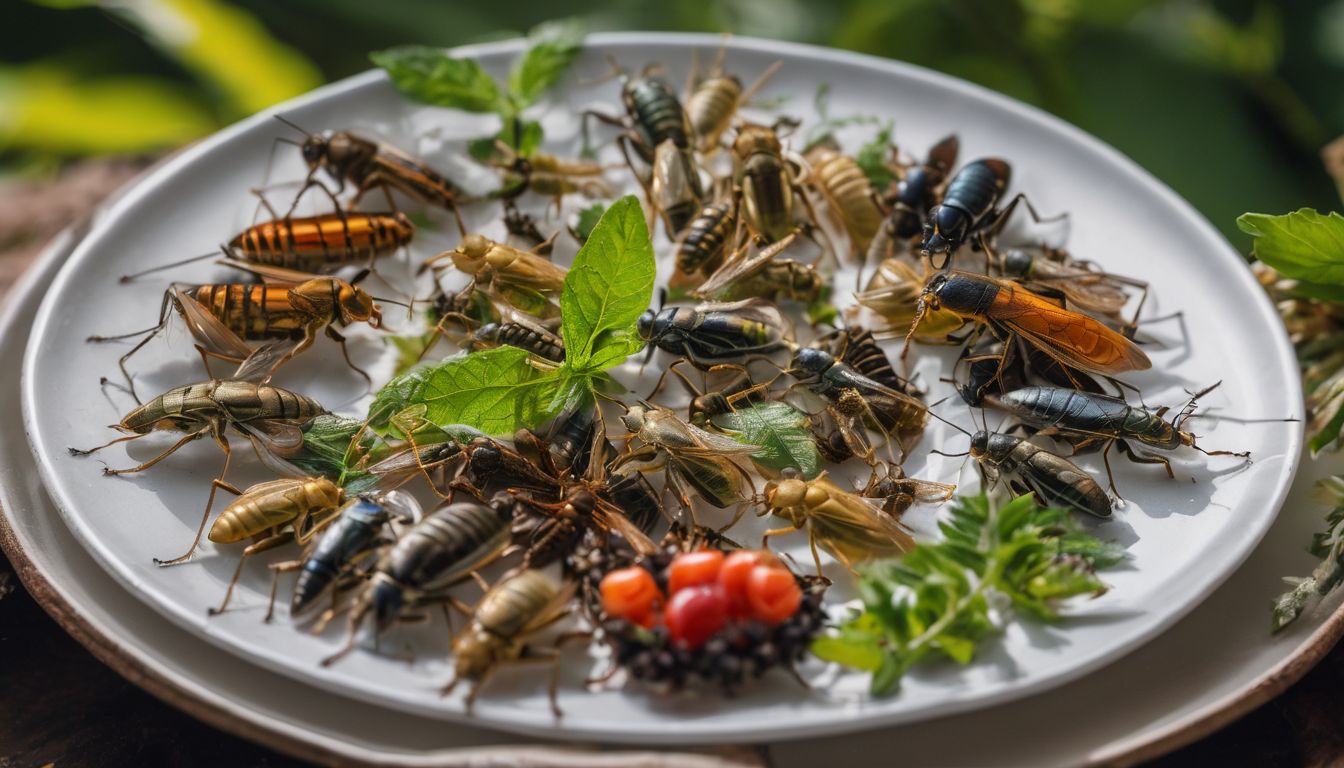Your Guide to Healthy Eating—Eat Seasonally!
Eating seasonally is a simple and delicious way to help the environment and your health. How do you do it? Remember which foods are in season, check the labels to make sure the food you’re buying is from a relatively similar region, then buy and enjoy your food. As simple as it is, it’s got a lot of benefits: it helps the environment, it’s better for you, and it just tastes better.
Benefits for the environment: When you eat out-of-season fruits and vegetables, the produce has either been grown in heated greenhouses, or has been flown in from another country.1 Hothouses are often constructed out of environmentally unfriendly plastics. Long-distance transportation of food can require extensive use of gas and refrigeration, resulting in high carbon emissions.2 Either way requires more resources and energy use than buying produce naturally grown in the same regional climate. 3
Benefits for your health: Eating seasonally means eating fresh fruits and vegetables. The fresher they are, the less nutrients they have lost by being exposed to light and air. In addition to that, processed and canned foods tend to include unhealthy additives like salt, sugar, and other chemical preservatives.4
Benefits for taste: Eating a food during its natural season just tastes better. One reason is because that’s when it is at its ripest. Processed or long-distance food can also lose texture and taste when exposed to light, air, or other processing methods.5 Even better, a lot of seasonal food is local and organic, meaning less exposure to chemicals or other potentially harmful elements.6
Time and effort: Low to Medium Eating in season is not too different from eating out of season, especially in warmer climates. All you do is go to the local grocery store and pick out fruits and vegetable, just with the added knowledge of which ones are in season.7
Cost: Low
Seasonal food can be just the same price as non-seasonal food at your local grocery store, although you may want to check out another store if none of the food comes from the same climactic region.8
Guidelines to Follow
1. Check the charts nearest you. One of the most important things about eating seasonally is knowing what kind of climate you live in. A warmer climate will be able to offer a much broader array of options, while a colder climate may require a lot more research. For a specific guide to the seasons in your state, check the Epicurious United States map, and click on the state you live in for the foods in season at the moment. For a more thorough chart of the seasons of each fruit and vegetable, try the BBC guide or CUESA guide:
◦ Epicurious U.S. map
◦ BBC guide
◦ Center for Urban Education about Sustainable Agriculture (CUESA) guide
2. Think of basic trends of seasonality. Although the seasons are much longer in California than, say, Alaska, food seasons occur in a fairly predictable manner. If you don’t happen to look up every single food item in a seasonality chart, you can use these general trends to help you remember. For colder climates, rely more on the winter, autumn, and spring vegetables.
- Spring (March-June): Springtime is the time for fresh, leafy vegetables to start growing back in, so look for a lot of greens like asparagus, swiss chard, spinach, romaine lettuce, parsley, basil, green onions, peas, okra, fennel.9,10 Start to look for smaller fruits like cherries, figs, nectarines, apricots, raspberries, strawberries, blueberries, currants, and rhubarb.11 You may also find some hard-shelled fruit like cantaloupe, pineapple, casaba melons, and papaya.
- Summer (June-September): Summer is the hot season, so look for juicier fruits like mangoes, watermelons, plums, peaches, grapes, guava, honeydew, and lychee, in addition to most of the fruits found during spring.12 Because summer is the season of fruits, look for fruit-like vegetables like avocado, beans, green beans, beets, cucumber, corn, onions, peppers, squashes, eggplants, zucchini, tomatoes, and potatoes.13
- Autumn (September-December): During the fall, think of fruits that would be perfect to pack with your lunch, like apples, bananas, oranges, clementines, mandarins, pears, kiwis, persimmons, cranberries, tangerines, pomegranates, and kumquat.14 Also, think of all the weird-shaped looking vegetables, like broccoli, brussel sprouts, artichokes, carrots, winter squash, bok choy, pumpkin, sweet potatoes, leeks, cauliflower, celery root, watercress, and turnips.15
- Winter (December-March): In the winter, look for a lot of the autumn vegetables16, although the most available vegetables will likely be root vegetables like carrot, potato, onions, garlic, and sweet potatoes.17 A similar principle goes for the fruits, although there may be more new options like pummelo, passion fruit, tangelo, and ugli fruit.
3. Ask an employee in the produce section. If you happen to go to a Whole Foods, a co-op, or a small local market, try asking an employee about what’s in season. Those who work in the produce section in these kinds of stores are likely to know which fruits and vegetables are at their peak, since they’re the ones who have been unpacking all the different produce getting shipped to the store.18
4. Go to your local farmer’s market. A great place to find seasonal food without knowing your seasons is just to go to a local farmer’s market. Farmers know the local seasons and micro-seasons because it’s their profession. Fruit and vegetable stands are guaranteed to be stocked with just-harvested food, so you can get a feel for yourself of the seasons of food just by walking through the market. If you don’t know where your local farmer’s market is located, try finding it here:
◦ becoming a locavore, click here.
9. If you eat wild game, try seasonal meat. Wild animals eat a natural and wholesome diet, and their meat is said to taste much better than farm-raised cattle because of it.20 However, seasonal game is not nearly as popular as seasonal fruit, so try researching for any vendors of wild game near you.
10. If you eat wild-caught fish, try seasonal fish. Although each fish has its own unique season, some of the most common ones fall into a certain pattern. Eat cod, mussels, and oysters during the spring and fall, and eat crab, halibut, salmon, and tuna during summer and fall.21
11. Find some great recipes for your seasonal food. Now that you’ve got a bunch of new and exciting seasonal foods to try, you may not know any good recipes. If you don’t know where to start, try the following websites. For a comprehensive list of recipes by season, go to the CUESA website. For a listing by month, go to the BBC website, scroll down to the seasonal recipes and click on the current month. For an ongoing recipe blog, try long-time seasonal eater Tamra’s recipe website.
◦ Center for Urban Education about Sustainable Agriculture
◦ BBC recipes
◦ Tamra’s Blog
Bon appétit!




